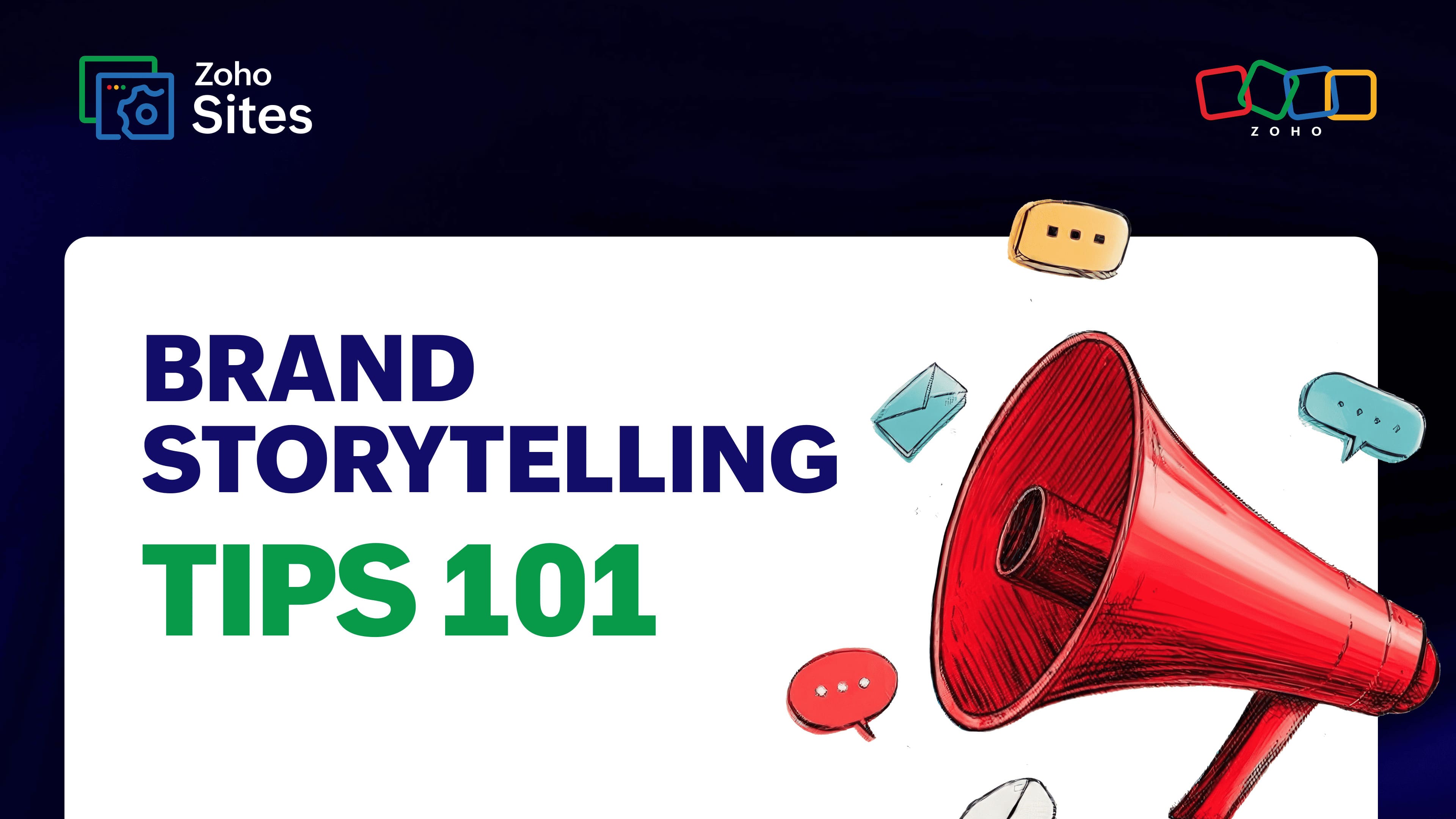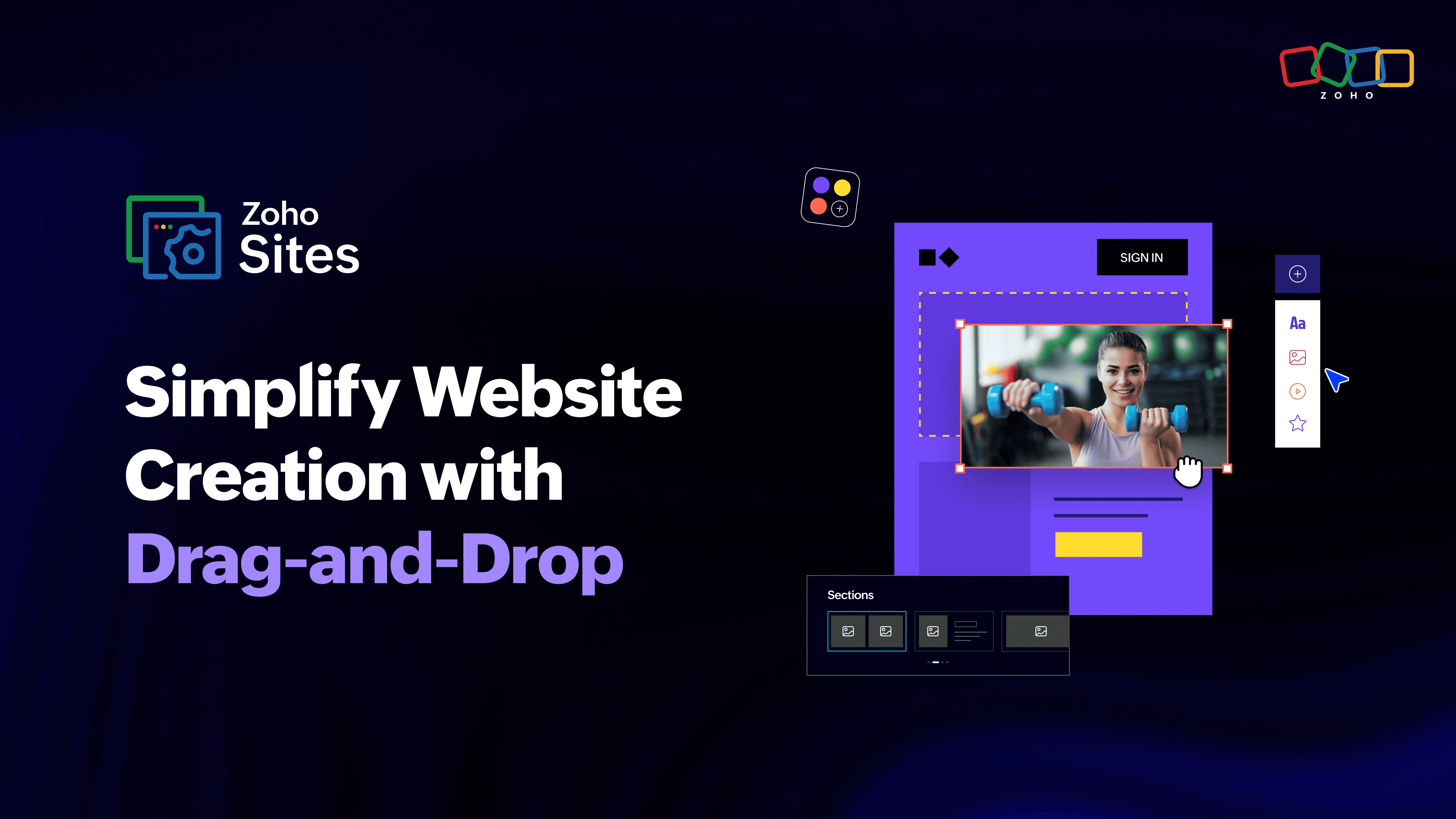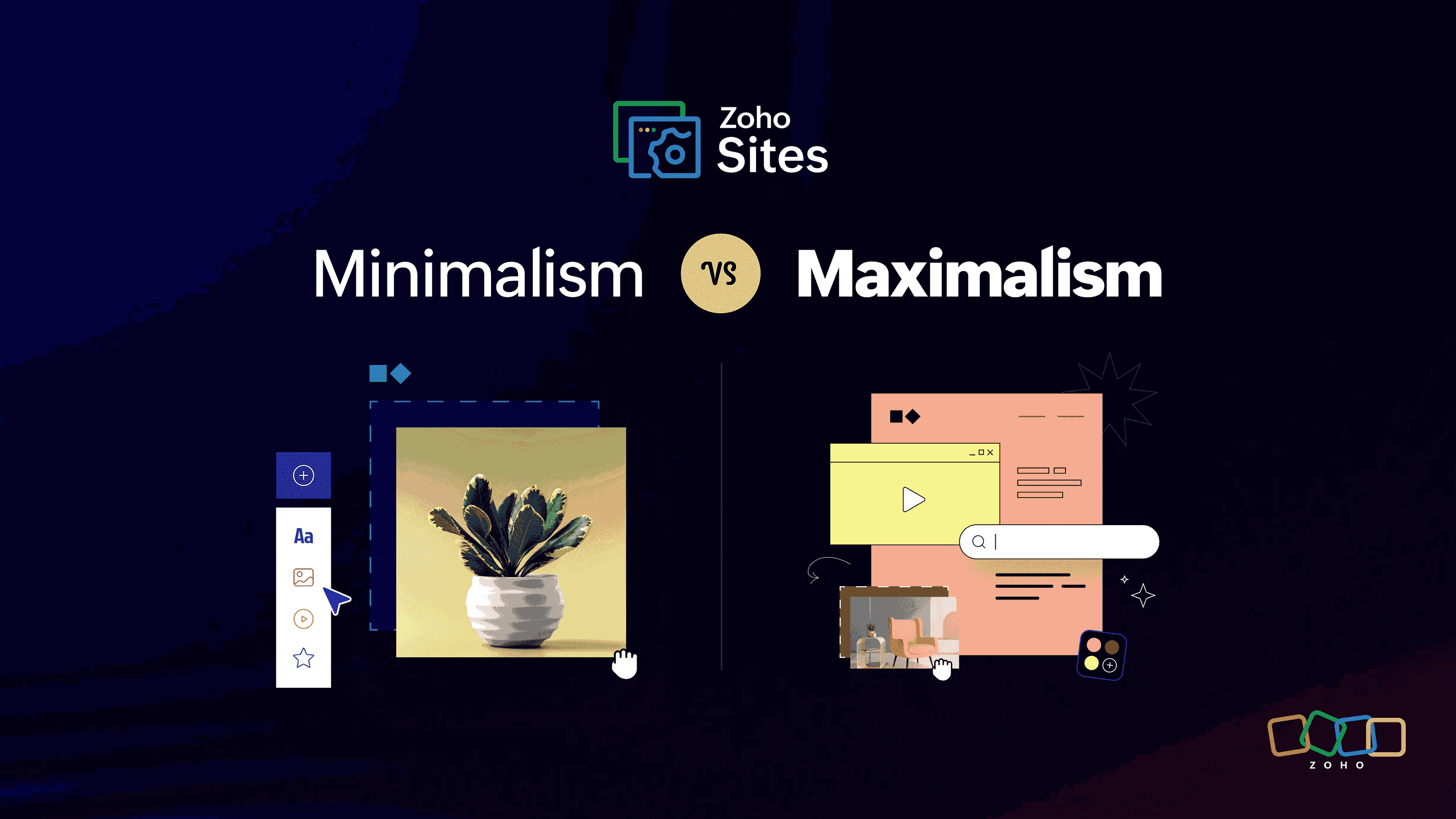User journey: help prospects find what they're looking for
- Last Updated : August 13, 2024
- 900 Views
- 7 Min Read
So far in the Make your own website blog series, we've introduced the idea of creating your own website with Zoho Sites and discussed the sitemap, wireframe, and content formats that you should use. Next in the series, we'll discuss user journeys and how to make website visits more rewarding for users.
Users visiting your website are on a journey. They're usually looking for something specific and know little about you. If you're to engage with them meaningfully, you should offer visitors a path they can take to find the relevant information, and in turn, the visitors will perhaps take action to benefit your business.
As a small business owner, you're probably trying to attract new business via your website. For instance, if you're a furniture store, the new user's journey on your website might start from an ad you placed on Google for people searching for the term "furniture." Maybe this ad is linked to a blog called "5 different ways to style your armchair" on your website that the visitor discovers when they click on this product. As they read the blog on your website, they might realize your expertise and want to know if you've helped similar customers in the past, or they might instantly want to send a query to you. If they need urgent help, you might also prompt them to email you directly or call your business number.
Blog > Case study blog > Query form/ Direct email/ Phone number
Blog > Query form
Blog > Email/ Phone
Case study blog > Blog > Query form/ Direct email/ Phone number
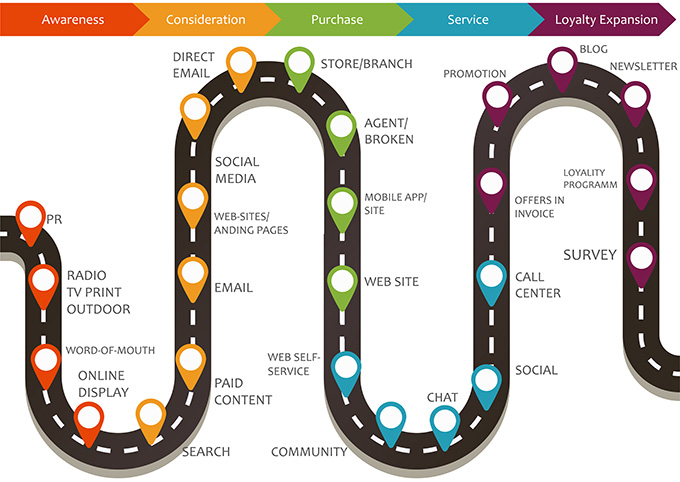
Source: Image is from https://www.invespcro.com/blog/customer-journey-maps/
The discovery of this chain of events should lead to a design decision on your website. It would make business sense for each blog page to have a linked case study, a query form, and your email address and phone number. Similarly, each case study page must also have a linked blog, a query form, and your email address and phone number.
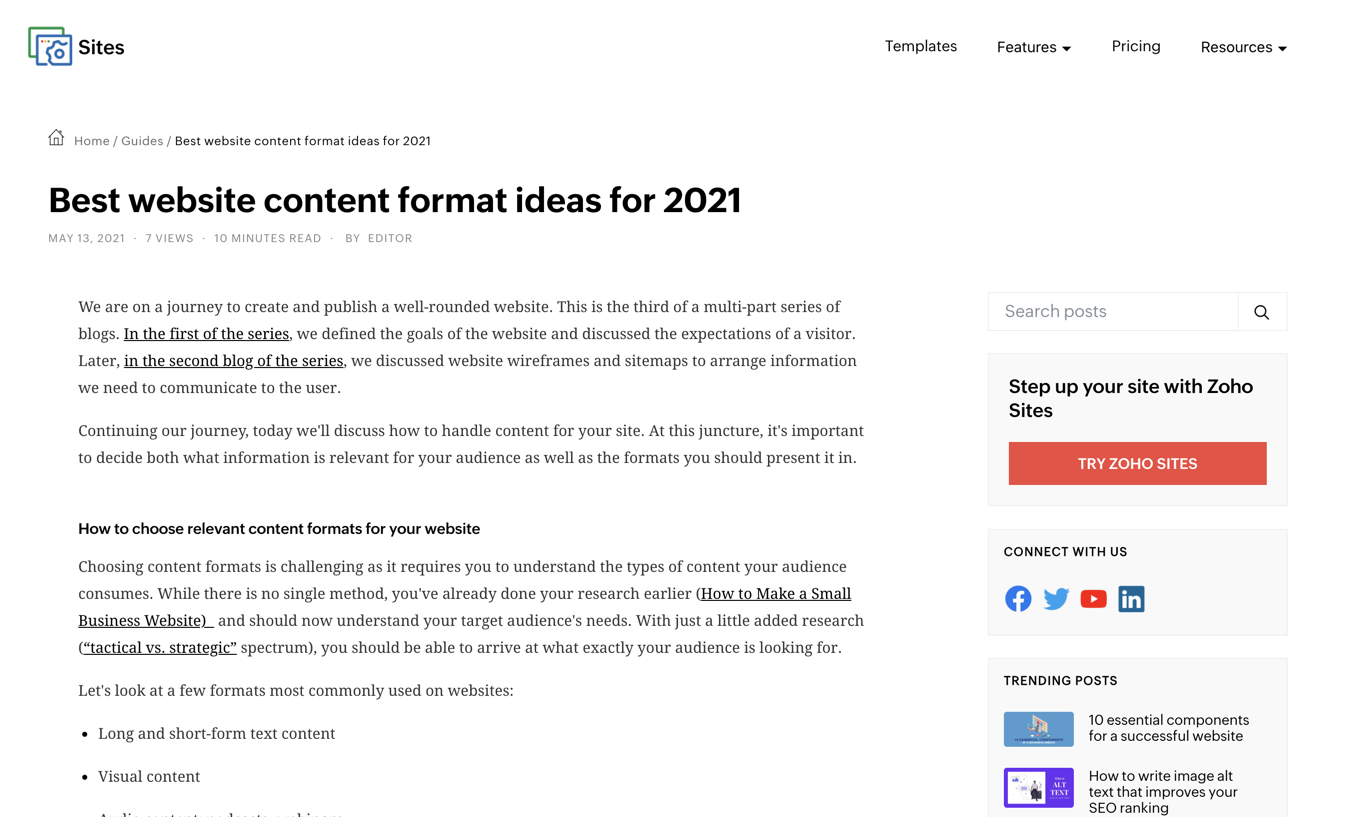
All Zoho Sites blogs use this in real-time. We link between related blogs and make it easy for our readers to contact us. They can also connect with us on social media platforms. Finally, we let users start using our product with a single click.
Similar to the above, you can continue to build user journeys for different customers. You might want to split new user journeys by the location of your visitors or by services they might be interested in. For existing users, you might want to build user journeys starting at your homepage (as these users are already aware of your business) or even an email that you send periodically to a list of subscribers. User journeys and their design depends on the nature of your business, how you interact with your customers, and what actions you wish visitors to take.
Start small and experiment
Building user journeys for new businesses is a challenging process. Small businesses might find themselves overwhelmed quickly. To avoid undue complexity, start by focusing on fulfilling your website's objectives, such as lead generation, improving sales or even building a subscriber list for your email campaigns. You should take your time in building these user journeys and experiment often to measure any improvement.
Build a feedback mechanism
To experiment effectively, you'll need to build a feedback mechanism. Using a tool such as Zoho PageSense to track how visitors engage with your website will allow you to get real-time input from your site users. You can then use the insight to make the website more effective, whether it's the placement of CTAs, adding new sections to the web page, and more. With enough time and patience, you'll be able to meet the goals you set out to achieve with your website.
Real-time engagement
The primary aim of building user journeys is to improve user experience on your website so conversions for your business can increase. Prospects expect to find answers, and one way to offer them answers immediately is the real-time chat functionality.
A word of caution: only add real-time chat functionality if you have the time and personnel to support your customers. The last thing you want is for customers to type in a query but never be able to get through to you. A tool like Zoho SalesIQ can make the live chat experience positive both for you and your prospects. They always appreciate personal engagement, and the functionality is sure to delight your website visitors.
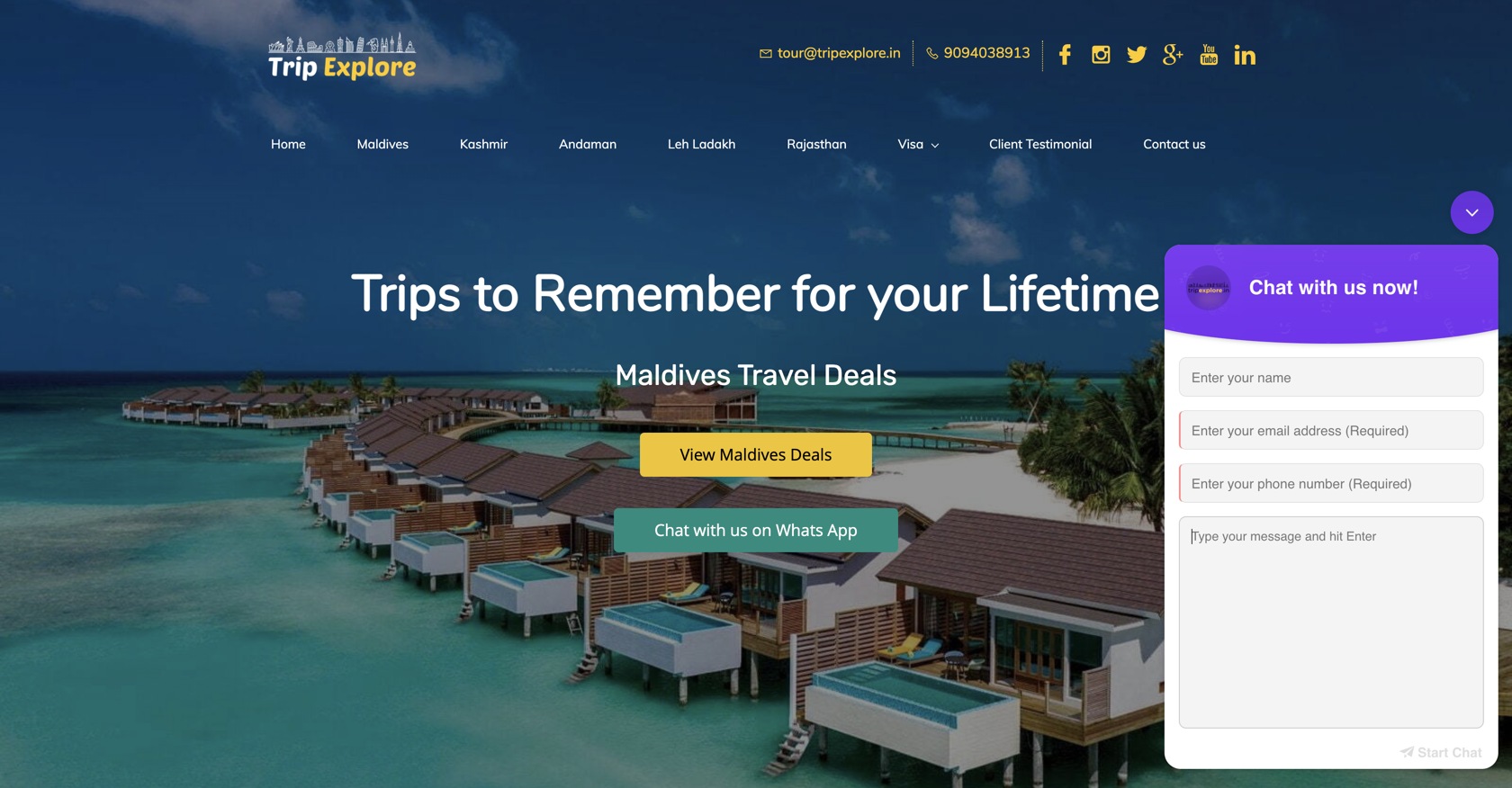
Trip Explore uses Zoho Sites and is integrated with Zoho SalesIQ's chat window to provide customers with support as they browse through the website.
Deep dive: user journey research
For most users, setting up a few user journeys will be sufficient. If you wish to take the exercise to the next level, we'll discuss the research aspect of building complex user journeys in this section.
The best user journeys are created by blending different types of research. The first method, primary research, involves talking with users directly. This process requires you to ask questions about user needs, which might return a mix of objective and subjective answers.
Primary research can be expensive and time-intensive, so you can turn to the second method, secondary research, to circumnavigate the problem. Secondary research usually consists of looking at what your competition is doing and following industry best practices to get optimal final results.
Primary research
Let's start the research process from the perspective of the user. Prospects experience several touchpoints with businesses, whether in a physical store, over the telephone, at a sales call at their homes, or on a website. For a user, these amount to a single user experience, even if provided via different agencies from the business's viewpoint.
When starting user research, focus the user's attention on the channel for which you're researching. Also, focus on their goals rather than their preferences. As a business, gathering data on a user's goals is more important than discussing user preferences such as website style or color.
You can start user research by:
Creating a research cohort
Begin by looking at many different types of users so you cover the largest possible spectrum. Aim to speak with as many different types as you can. You should also add other potential users such as your agents, staff, and external stakeholders like suppliers.
Interviewing and observing actual or likely users of the website
You will first need to explain to a user that the research is designed to help you with your website. Most users will be happy to help you, especially if they have an affinity to your business. Take care to set the correct expectations, such as the need to share screens during the interview, and encourage them to be as honest as possible without worrying about offending you. When your meeting begins, thank them for their time, and explain that there are no wrong answers and that you are comfortable hearing the user's opinion. Let the user express freely, and keep them focused on the topic at hand. Don't feel the need to defend your work—this exercise is meant for you to gather user insight and nothing else.
Reviewing existing evidence
Along with the evidence you gather, deploy tools such as Zoho PageSense to gather anonymous heat map and navigational recording data from your website. Treat any opinions or suggestions that don’t come from users as assumptions. It's also important to note how your users navigate obvious problems on your website, such as using browser services to translate content into their preferred language.
Secondary research
While you're speaking directly with users and stakeholders, it's important to research what your competitors or other businesses (similar in size to yours or larger) are doing on their website. With more clarity on what your users need, you will begin to notice certain website features others have deployed or pieces of content that are important for you to write about as well.
Along with researching your competition, look for specific issues you're trying to solve, and you might find answers in allied industries. In other words, research how to solve specific problems users bring up. The more you read about possible solutions, the better the final results on your website are likely to be.
Conclusion
Finally, it's important for you to spend sufficient time categorizing the various data points and opinions you've gathered. Create as many different customer profiles as you can, and create a simple map of user needs and solutions for each category.
While the process can easily spiral into to a long and winding task, try to keep it simple at the beginning and introduce small changes over time. Continue to introduce new user journeys into your website and test older ones till you achieve the goals of your website.
End of Chapter 4: Developing a user journey
With the fourth blog in the series, we explored the most important aspects before the launch of a website—designing your site to give visitors a positive user experience and setting up a process to improve the website continuously. This will give you the right tools to decide how to bring the entire website together as we discuss a checklist before launching our website in the next blog in the series.
So far in the series, we established the objective of a website (introduction), designed the overarching sitemap to meet this objective, designed individual pages with wireframes (sitemaps and wireframes), and discussed the various content formats to fill out the wireframes (content formats).
Zoho Sites Articles is a forum for businesses that covers a broad spectrum of topics ranging from website creation to marketing. Managed by the in-house team, the forum is regularly updated with information to set up, run, and promote your website.
If you wish to be a part of this dynamic community and share your thoughts or publish an article on the platform, please write us at marketing@zohosites.com.
For support-related queries, please write to support@zohosites.com.
